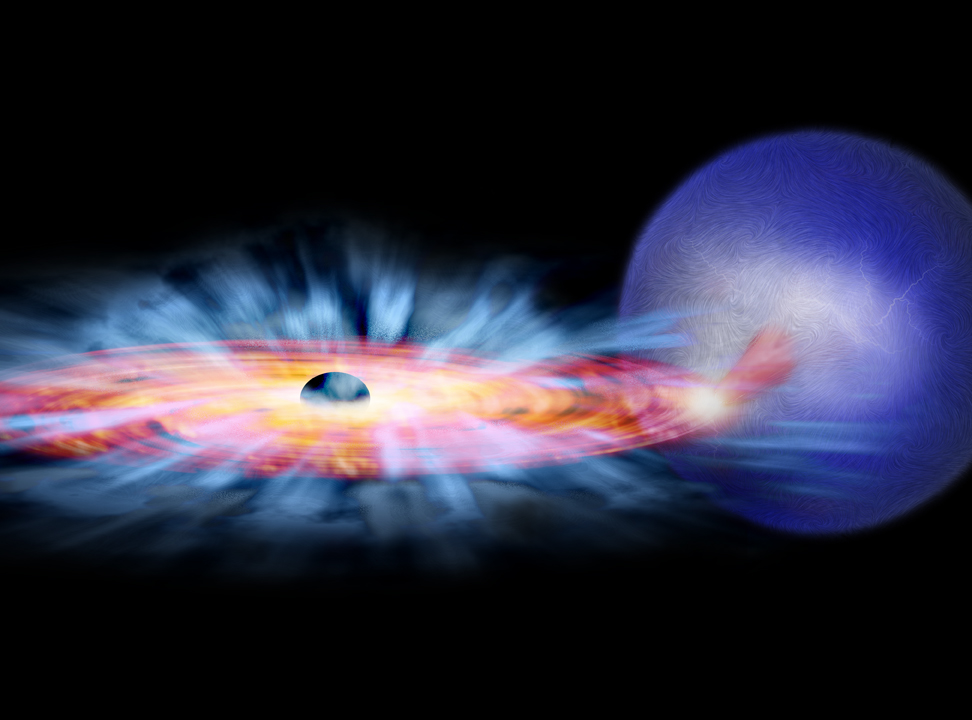Research
Black Hole X-Ray Binaries
Black hole X-ray binaries are systems consisting of a black hole and a stellar companion.
The star accretes material around the black hole, resulting in a large amount of X-ray emission.
These objects are laboratories for studying binary dynamics, General Relativity in high gravitational fields, and mass accretion and ejection processes in high-energy regimes.
One of these systems, GRO J1655-40, is particularly interesting for producing a very strong wind in 2005.
This was one of the strongest winds observed to date, buts its origin is unknown.

Neilsen et al. (2016) discovered optical/infrared (OIR) emission from the wind that varies on the orbital period.
However, this analysis was based on data taken in 1998 and 1999
(van der Hooft et al. 1998; Greene et al. 2001)
with significant uncertainties in the measurements of the orbital phase.
In order to better analyze this OIR excess from the wind, a more accurate ephemeris is needed.

My research has focused on an ephemeral analysis of GRO J1655-40 using SMARTS data taken from 2006 to 2016. The goal is to obtain a more precise measurement on the orbital period to get a better understanding of the black hole wind. The methods I am using to determine the orbital period include a data-driven approach called Phase Dispersion Minimization (PDM, Stellingwerf 1978, Plavchan et al. 2008, Parks et al. 2014), and a model-based approach using the Eclipsing Light Curve (ELC) algorithm (Orosz & Hauschildt 2000). The goal of this research is to use this more precise ephemeris to update the results of the OIR excess from the 2005 outburst and get a clearer understanding of the geometry of the system and the origin of the wind.
I began working on this project as a first year undergraduate at Villanova University under the mentorship of Dr. Joey Neilsen, and our paper was published in 2023 (Petretti et al. 2023).
